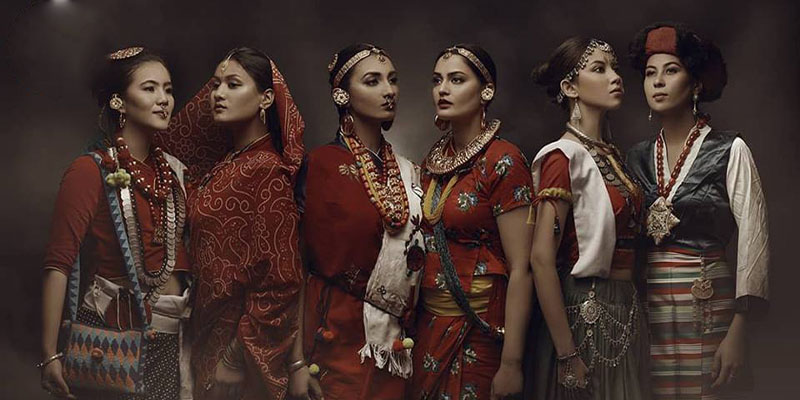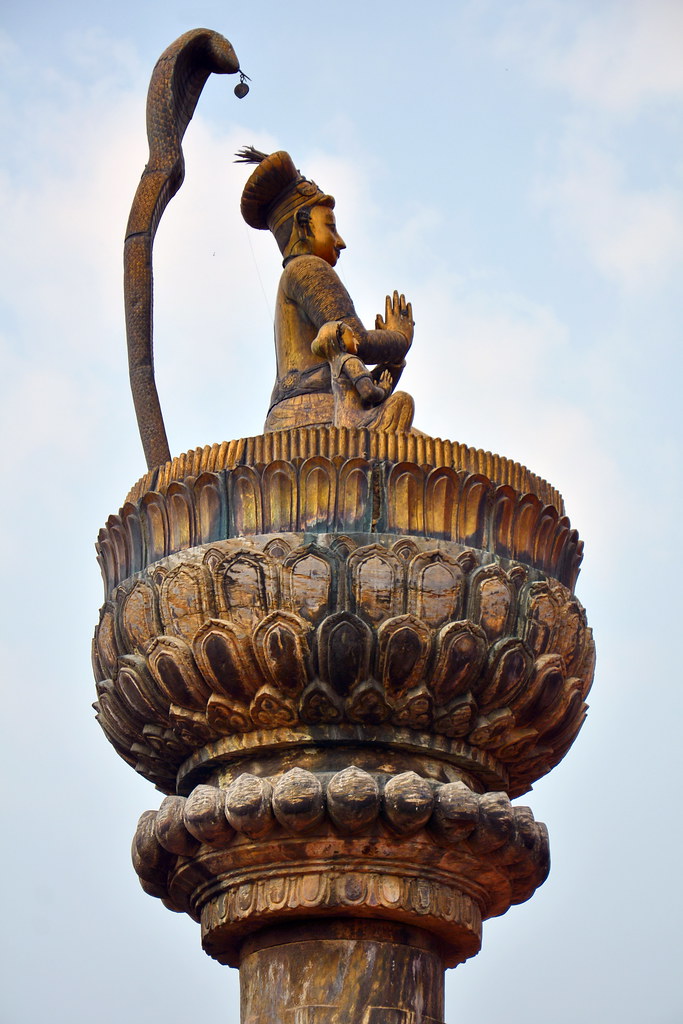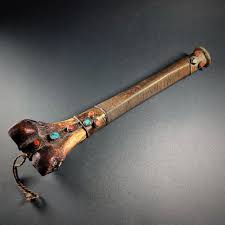Share this Article
Nepal is a land of rich cultural diversity, with each ethnic group contributing its unique traditions and craftsmanship. One of the most vibrant and intricate forms of traditional Nepali craft is Tharu beadwork, which plays a significant role in the jewelry traditions of the Tharu community. This beadwork is not just a form of adornment but a reflection of the Tharu people's history, culture, and beliefs. The jewelry is often worn during special occasions, festivals, and ceremonies, symbolizing identity, social status, and aesthetic expression.
1. The Tharu Community and Their Traditional Craftsmanship
The Tharu people are one of the indigenous groups of Nepal, primarily residing in the Terai region, which lies along the southern belt of Nepal, bordering India. The community has its own distinct language, customs, and cultural practices. They are known for their deep connection to the land, their agricultural lifestyle, and their vibrant cultural heritage.
Tharu jewelry, particularly their beadwork, is a significant part of their material culture. Historically, beadwork was a means of showcasing both personal identity and cultural pride. It is deeply connected to rituals, marriage ceremonies, and festivals, where adornment becomes a symbol of social standing and an expression of cultural richness.
2. The Craft of Beadwork: Techniques and Materials
Tharu beadwork is a time-honored craft passed down through generations. It involves intricate handcrafting techniques, with artisans carefully designing and crafting each piece by hand. The key characteristics of Tharu beadwork include:
2.1 Beads and Materials
The materials used for Tharu beadwork are diverse, ranging from natural elements found in the local environment to imported goods that have become integral to the craft. Common materials include:
- Glass Beads: Brightly colored glass beads are among the most widely used in Tharu jewelry. These beads are often sourced from local markets and are used to create vibrant patterns and designs.
- Seeds: The Tharu people use various seeds, such as those from local plants, to create jewelry. These seeds, which are often natural and eco-friendly, have symbolic meanings in Tharu culture, representing fertility, life, and nature.
- Bone, Horn, and Shells: These materials are also incorporated into beadwork. Bone and horn are shaped and polished into beads, while shells are used for their natural beauty and symbolic importance.
- Metal Beads: In some designs, artisans use metal beads, such as brass, copper, and silver, to add weight, texture, and a sense of richness to the jewelry.
2.2 Techniques of Beadwork
Beadwork in the Tharu community is a delicate and labor-intensive process. The techniques used in creating these ornaments have been honed over centuries. Some of the prominent techniques include:
- Stringing: The most common technique involves stringing beads onto threads or wires, creating intricate patterns and designs. The beads are often woven together to form necklaces, bracelets, earrings, and headpieces.
- Crocheting and Knotting: Tharu artisans use crochet and knotting methods to combine beads with threads or yarn, allowing for flexible designs that can drape elegantly on the body.
- Embroidery with Beads: In some jewelry, especially those that are part of the traditional clothing worn by Tharu women, beads are sewn onto fabrics to create decorative motifs. These bead-embroidered garments are worn during festivals, weddings, and other ceremonial events.
- Bead Loom Weaving: A traditional technique where beads are woven into intricate patterns using a loom. This method is used to create broader, more detailed designs such as belts, large necklaces, and ceremonial attire.
3. Symbolism in Tharu Beadwork
Beadwork in Tharu jewelry is not merely decorative; it is imbued with cultural symbolism. Each design, color, and material has a specific meaning tied to the community’s beliefs, nature, and everyday life.
3.1 Colors and Patterns
- Red and Green: These colors are significant in Tharu culture. Red often symbolizes life, vitality, and strength, while green represents fertility, growth, and nature. These colors are frequently used in beadwork to invoke these symbolic meanings.
- White: White beads are often used in ceremonial jewelry, symbolizing purity and spiritual connection. They are particularly significant during rites of passage, such as weddings and births.
- Blue and Yellow: These colors are associated with peace, calmness, and divine blessings, which is why they are commonly used in jewelry worn during religious ceremonies and rituals.
3.2 Shapes and Forms
- Circular Beads: Circular shapes represent continuity and eternity in Tharu culture, often symbolizing the cyclical nature of life.
- Animal and Nature Motifs: Tharu jewelry often incorporates beads shaped like animals, birds, or natural elements, such as leaves and flowers. These shapes represent the Tharu people's strong connection to nature and their respect for the animals and plants they rely on.
- Geometric Patterns: Symmetrical and geometric designs in beadwork often symbolize balance, harmony, and stability, which are essential principles in Tharu society.
4. Cultural and Ceremonial Role of Tharu Jewelry
Jewelry holds a significant place in Tharu culture, particularly in social and religious ceremonies. The intricate beadwork plays a crucial role in many rituals:
4.1 Marriage Ceremonies
In Tharu culture, jewelry is an essential part of the dowry and is considered a valuable asset. During marriage ceremonies, both the bride and groom wear elaborate bead necklaces, earrings, and headpieces, symbolizing prosperity, fertility, and the start of a new life. The beads are believed to bring good fortune and blessings to the couple.
- Bride's Jewelry: The bride typically wears a collection of mangal sutras, necklaces, bracelets, and headpieces made from beads, each piece carrying its own significance. The jewelry is often made with red and white beads, which are traditional choices for marriage.
- Groom's Jewelry: The groom, too, wears bead jewelry during the wedding, including bracelets and necklaces, as a symbol of his commitment to the union.
4.2 Festivals and Rituals
During religious festivals such as Maghi, Tihar, and Dashain, Tharu women adorn themselves with their finest beadwork to show their devotion and to celebrate the occasion. Jewelry is an important part of these festivals, and women wear elaborate bead necklaces and other ornaments to signify respect to the gods and to mark the festive spirit.
4.3 Rites of Passage
Tharu jewelry is also worn during rituals of passage, such as naming ceremonies, puberty rites, and other life-cycle events. Beadwork represents both the physical and spiritual growth of the individual, marking important milestones in their life.
5. Challenges and Revival of Tharu Beadwork
While the art of Tharu beadwork is still practiced today, the craft faces several challenges. Modernization and the influence of global fashion trends have caused traditional beadwork to become less common. The younger generation, often swayed by contemporary jewelry designs, may not see the value in learning and continuing these age-old traditions.
However, there has been a renewed interest in preserving and promoting Tharu beadwork through various cultural preservation initiatives. Local artisans are now creating fusion jewelry that combines traditional beadwork with modern designs, appealing to both local and international markets. Additionally, craft fairs, workshops, and cultural festivals are being organized to educate people about the history and importance of Tharu beadwork, encouraging a new generation of artisans to learn the craft.
6. Conclusion: Preserving a Rich Tradition
Tharu beadwork is more than just a form of jewelry—it's an embodiment of cultural identity, historical significance, and artistic expression. The intricate bead designs carry the wisdom and values of the Tharu community, and the jewelry remains a vital link between the past, present, and future. By appreciating and preserving the craft of Tharu beadwork, Nepal ensures that its rich cultural heritage continues to thrive for generations to come.
Categories:
History & Heritage
Tags:
Heritage







